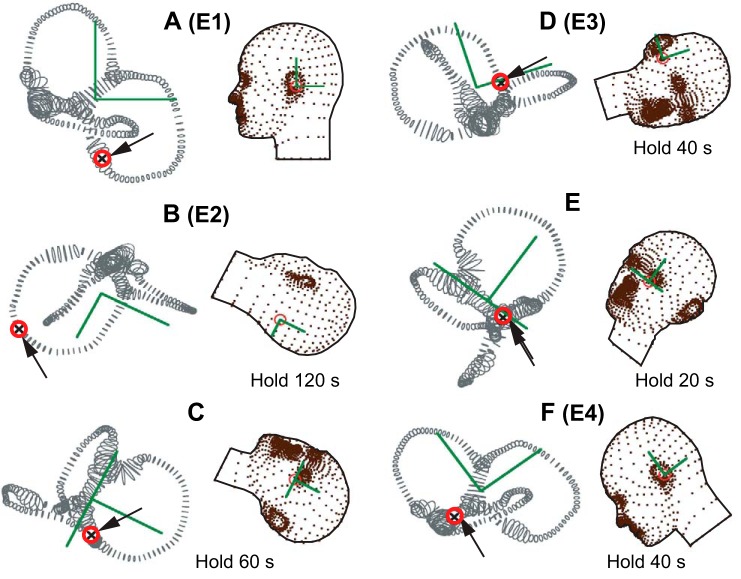Fig. 8.
Modified Epley canalith repositioning procedure. Sequence of 6 head positions (A–F) designed to move canaliths (arrows) from the long arm of the posterior canal in the right ear to the utricular vestibule. Hold times shown in each position are estimates based on relatively small, slowly sedimenting, canaliths. A: initial seated position (Epley 1). B: rotation into the Dix-Hallpike head hanging position toward the right ear to sediment particles as shown in Fig. 7. (Epley 2). C: rotation toward the left ear to sediment particles toward the common crus. D: head held up rotated left to move particles into crus avoiding conversion to the anterior canal (Modified Epley 3). E: return toward upright position with particles sedimenting down the common crus. F: head tipped forward to move particles to nasal region of the utricular vestibule (Epley 4). [Based on Rajguru et al. (2004).]

